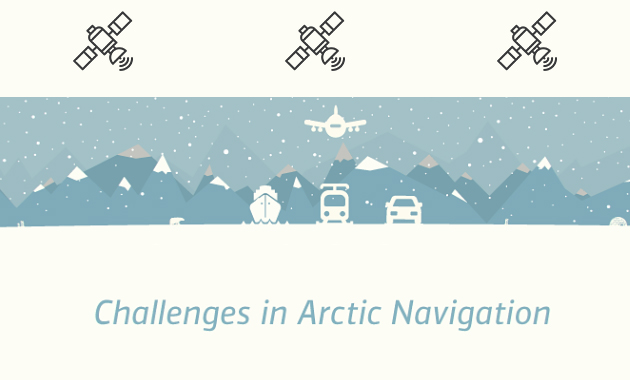EGNSS is not only a business enabler, providing the data needed for countless new services and applications, the ‘Galileo model’ can also serve as a template for nascent space businesses, ensuring that they reap the greatest possible economic benefit from their efforts, according to speakers at the Challenges in Arctic Navigation workshop in Olos, Muonio, Finland on 16-18 April.
Participants in the Arctic navigation workshop noted  that GNSS is no longer a breakthrough technology - it is already a business enabler that is used as the basis for service provision in many sectors, and the opportunities provided by GNSS are being embraced by the business community both in the Arctic region and elsewhere.
that GNSS is no longer a breakthrough technology - it is already a business enabler that is used as the basis for service provision in many sectors, and the opportunities provided by GNSS are being embraced by the business community both in the Arctic region and elsewhere.
Enabling business development
At the workshop, Pauli Stigell, a senior advisor at Business Finland, spoke about his organisation’s New Space Economy programme, which funds start-ups and provides export services for space-related businesses. He said that the programme aims to double the exports of participating companies by 2020 while achieving an annual turnover of at least EUR 600 million in services within the sector. Stigell noted in particular the business-enabling potential of Galileo. “Galileo will be ready in 2020 and this will definitely create business,” he said.
A number of factors that might potentially hamper the development of GNSS-based businesses in the Arctic were highlighted during the workshop presentations. These included low satellite coverage and that the fact that signals in the Arctic region are vulnerable to space weather and ionospheric scintillation. However, it was also noted that the expansion of EGNOS coverage, along with new receiver designs and navigation systems, would improve redundancy and help mitigate the impact of these negative factors.
Watch this: EGNOS is Growing
In his presentation, Gian Gherardo Calini, the GSA’s Head of Market Development, highlighted funding opportunities that would address these restraining factors and contribute to the development of the EGNSS market in the Arctic region. He highlighted two open calls in particular:
- Aviation Grants call with a budget of EUR 10 million that is being made available to promote EGNOS operational implementation in aviation,
- Fundamental Elements call with a budget of EUR 6 million that targets the development of GNSS receiver technologies for the premium and general mass markets.
Galileo business model
During the workshop presentations, speakers noted that not only is Galileo an enabler of new businesses, services and applications; Galileo’s operating model can be used as a template for the commercial satellite sector. It was noted that the life-cycle of small commercial satellites of three to five years, or even of the larger commercial satellites, costing around EUR 100 million, of 10 years, is a very short time in which to build a business ecosystem on the ground.
In these conditions, it is crucial that businesses leveraging satellite technology are able to ramp up their service to a minimum service configuration, like the EU has been doing with Galileo, Juha-Matti Liukkonen, Director of Space and New Technologies at Reaktor, said. “You start a minimum service as soon as possible to establish the viability of the business case and then you add capacity and coverage. Incremental development is the way to go,” he said.
Galileo launched its initial services in December 2016, when it had 18 satellites in orbit, which means that the system has started providing positioning, navigation and timing services to users around the world long before the constellation reaches full capacity in 2020.
Media note: This feature can be republished without charge provided the European GNSS Agency (GSA) is acknowledged as the source at the top or the bottom of the story. You must request permission before you use any of the photographs on the site. If you republish, we would be grateful if you could link back to the GSA website (http://www.gsa.europa.eu).